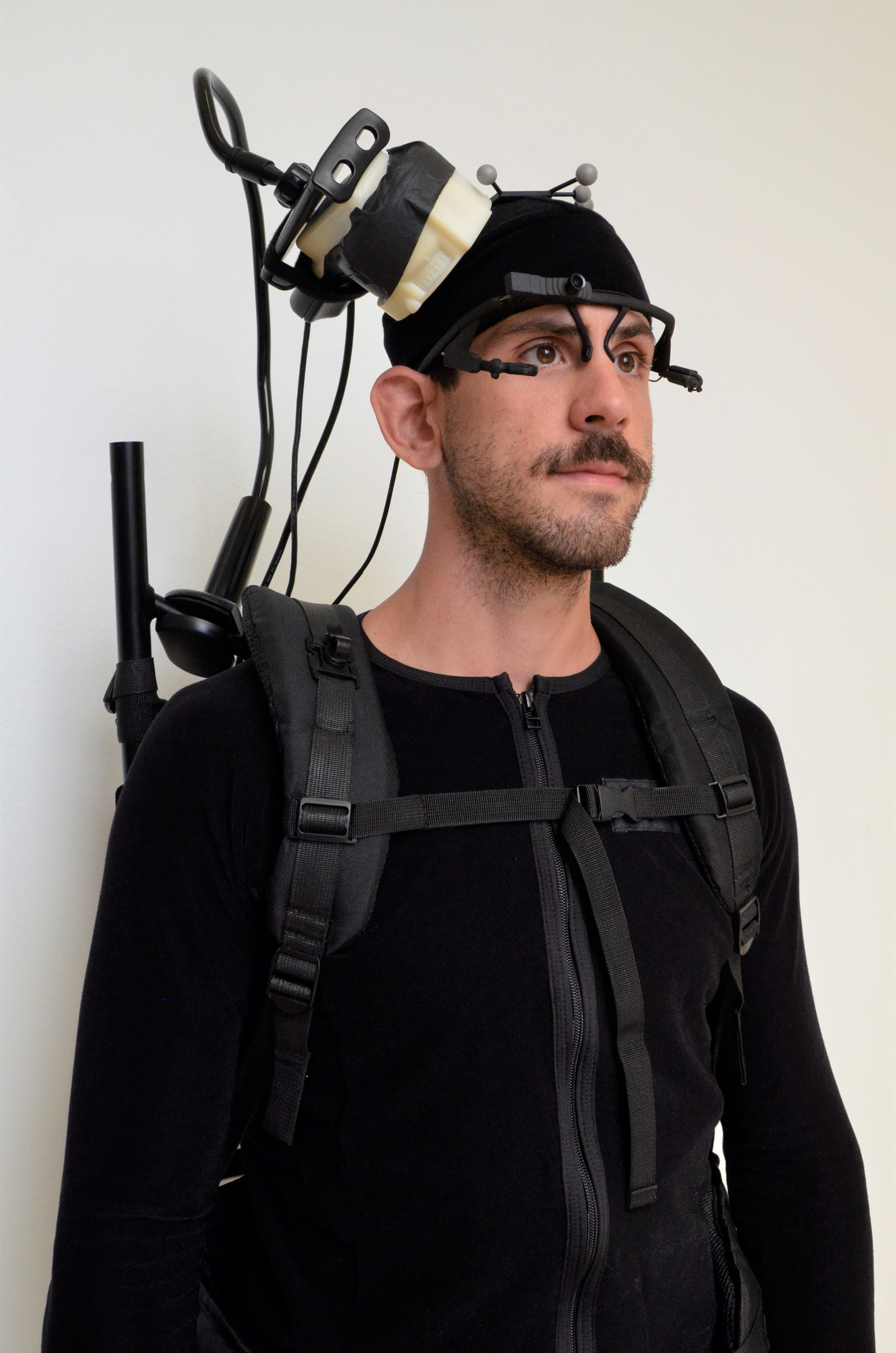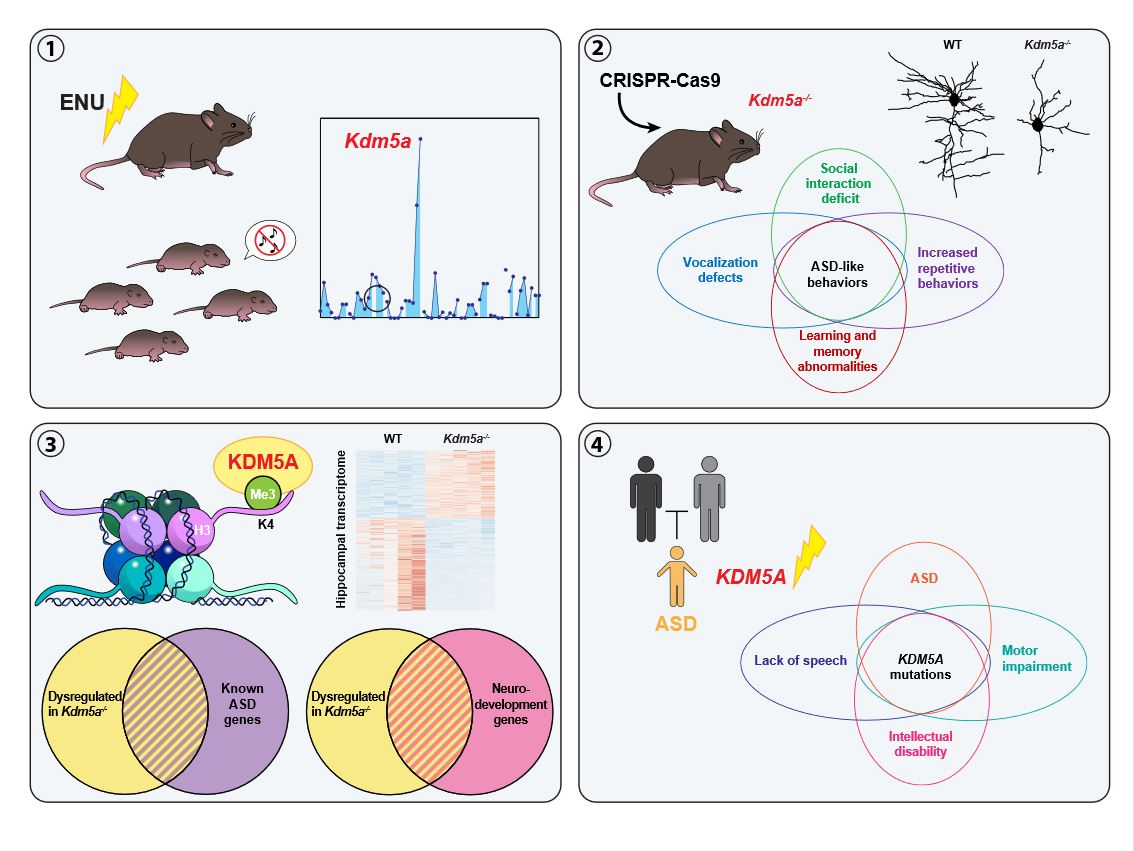Large-scale global forecasting and on-the-ground observations need to meld into one system to better predict and prevent wide-spread flooding disasters, according to an international research team who published a short view in Advances in Atmospheric Sciences on Dec. 23. “A…
Year: 2020
Shapeshifting crystals-varying stability in different forms of gallium selenide monolayers
Researchers investigate the structure and properties of a recently identified polymorph of gallium selenide crystal layer
Kobe University and Sysmex conducted clinical evaluation of the ELISPOT method: A new test for COVID
Report on T cell immunity to SARS-CoV-2 in the Japanese population
Human-made landscape promotes coexistence of two normally separated Andean warblers
Two Andean warbler species that typically occur at different elevations and hunt by tricking insects to escape can co-occur at the same elevation due to fragmentation of tropical montane forests caused by human agricultural practices
Novel method reveals small microplastics throughout Japan’s subtropical ocean
Research conducted in the Light-Matter Interactions for Quantum Technologies Unit at the Okinawa Institute of Science and Technology Graduate University (OIST) has revealed the presence of small microplastics in the ocean surrounding Okinawa. The study was published in Science of…
Early mammal with remarkably precise bite
Researchers investigate teeth of a small carnivorous mammal that are almost 150 million years old
Science Partner Journal BioDesign Research celebrates successful 1st International BioDesign Research Conference
The 1st International BioDesign Research Conference was held online in December 2020, hosted by Stanford University, University of Warwick, and BioDesign Research . Due to the coronavirus pandemic, the 1st International BioDesign Research Conference was held virtually. Approximately 7,500 people…
Modeling can help balance economy, health during pandemic
Nearly 300,000 deaths could be averted, depending on how severe isolation measures become
Protein tells developing cells to stick together
Tohoku University scientists have, for the first time, provided experimental evidence that cell stickiness helps them stay sorted within correct compartments during development. How tightly cells clump together, known as cell adhesion, appears to be enabled by a protein better…
Discovery of aging mechanism for hematopoietic stem cells
Limited rejuvenation of aged hematopoietic stem cells in young bone marrow niche
RUDN University scientist showed global warming effect on greenhouse gas emissions in paddy soils
A soil scientist from RUDN University studied the decomposition of organic matter in rice paddies–the sources of CO2 and methane emissions. Both gases add to the greenhouse effect and affect climate warming in subtropical regions. The emissions increase when the…
Korean artificial sun, KSTAR, sets the new world record of 20-sec-long operation at 100 million °C
Aims to continuously operate high-temperature plasma over the 100-million-degree for 300 seconds by 2025
New Jersey Commission on Brain Injury Research funds Kessler Foundation study in children
Dr. Lengenfelder of Kessler Foundation will test new treatment for emotional processing deficits in children with traumatic brain injury
A new TanSat XCO2 global product for climate studies
Since CO 2 has been recognized as the most important anthropogenic greenhouse gas owing to its significant impact on global warming and climate change, there have been a substantial number of studies that have focused on investigating the status of…
New Wireless Wearable Sensors Monitor Brain Blood Flow and Oxygenation in Vulnerable Pediatric Patients
An interdisciplinary team from Northwestern University and Ann & Robert H. Lurie Children’s Hospital of Chicago developed and clinically tested soft, flexible, miniaturized sensors that gently adhere to the child’s forehead to wirelessly monitor changes in cerebral blood flow and oxygenation, to alert clinicians of potential need to intervene and restore equilibrium. Findings were published in the Proceedings of the National Academy of Sciences (PNAS).
People in Rural Areas Less Likely to Receive Specialty Care for Neurologic Conditions
A new study has found that while the prevalence of neurologic conditions like dementia, stroke, Parkinson’s disease and multiple sclerosis (MS) is consistent across the U.S., the distribution of neurologists is not, and people in more rural areas may be less likely to receive specialty care for certain neurologic conditions. The study, funded by the American Academy of Neurology, is published in the December 23, 2020, online issue of Neurology®, the medical journal of the American Academy of Neurology.
Neurology Patients Faced with Rising Out-of-Pocket Costs for Tests, Office Visits
Just like with drug costs, the amount of money people pay out-of-pocket for diagnostic tests and office visits for neurologic conditions has risen over 15 years, according to a new study published in the December 23, 2020, online issue of Neurology®, the medical journal of the American Academy of Neurology.

Remarkable new species of snake found hidden in a biodiversity collection
To be fair, the newly described Waray Dwarf Burrowing Snake (Levitonius mirus) is pretty great at hiding
Assessment of air contamination by SARS-CoV-2 in hospital settings
What The Study Did: In this systematic review of current evidence on air contamination with SARS-CoV-2 in hospital settings, the air close to and distant from patients with COVID-19 was frequently contaminated with SARS-CoV-2 RNA; however, few of these samples contained viable…

Ludwig Cancer Research Study Reveals How Circular ecDNA is Generated and Drives Drug Resistance in Cancer
Researchers led by Ludwig San Diego Member Don Cleveland and Peter Campbell of the Sanger Center have solved the mystery of how free-floating circular DNA fragments, which are almost exclusively found in cancer cells, drive gene amplification to generate drug resistance in cancer.

Ancient DNA retells story of Caribbean’s first people, with a few plot twists
The history of the Caribbean’s original islanders comes into sharper focus in a new Nature study that combines decades of archaeological work with advancements in genetic technology.

Eight ways Argonne advanced science in 2020
Throughout 2020, Argonne answered fundamental science questions and provided solutions for the world.
Detection of Blood Transfusion
Autologous blood transfusion is performance enhancing, and detection of abuse remains a major challenge in sports. To address this issue, investigators transfused a group of men with either blood or saline, and evaluated whether metabolites collected in urine before and…
Break Up Your Work Day with Healthy Stair Climbing Exercise Snacks
Sitting for long periods is known to have negative effects on metabolic and cardiovascular health. Building on recent work showing that brief bouts of vigorous exercise (exercise “snacks”) can improve fitness, investigators from the University of British Columbia in Canada…
BFFs: How Physical Exercise Impacts Brain Blood Flow, Memory after Paralysis
Thanks to advances in health care in the past several decades, more than 90% of people who have had a spinal cord injury survive beyond the first year. The focus now is managing the long-term impact of spinal cord injury…
New Year, New Weight Loss Program? Exercise More Important than Protein for Muscle Function in Older Women
In the U.S., most older women are overweight or obese, which can harm functional health like rising from a chair. Weight loss diets that are higher in protein are popular as they often cause greater body fat loss while keeping…

Breaking Bad: How Shattered Chromosomes Make Cancer Cells Drug-Resistant
UC San Diego and Ludwig Cancer Research scientists describe how a phenomenon known as “chromothripsis” breaks up chromosomes, which then reassemble in ways that ultimately promote cancer cell growth.
Healthcare Heroes: 10 Months on the COVID-19 Front Lines
When Joni Stokx, RN, heard that the COVID-19 vaccine was coming, it brought her to tears. A nurse at Cedars-Sinai Marina del Rey Hospital, she’s been caring for COVID-19 patients for 10 months. While she and her co-workers wear all the recommended personal protective equipment (PPE) and take lots of precautions, getting the vaccine will help her feel safer.

Similar factors cause health disparities in cancer, COVID-19
The same societal factors that have caused worse outcomes in cancer for some minority populations are now causing disparities in COVID outcomes. Potential policy changes could help reduce disparities and improve outcomes for both diseases.

Covering faces around kids won’t mask emotions
The proliferation of face coverings to keep COVID-19 in check isn’t keeping kids from understanding facial expressions, according to a new study by University of Wisconsin–Madison psychologists.
Christmas trees can be green because of a photosynthetic short-cut
How can conifers that are used for example as Christmas trees keep their green needles over the boreal winter when most trees shed their leaves?
Research reveals compromised transfer of SARS-CoV-2-specific antibodies through placenta
Recent analyses indicate that pregnant women and newborns may face elevated risks of developing more severe cases of COVID-19 following SARS-CoV-2 infection.
Stupid Strong Charitable Foundation Pledges $250,000 to Support Gastric Cancer Research at MD Anderson Cancer Center
Stupid Strong Charitable Foundation is proud to contribute $250,000 to The University of Texas MD Anderson Cancer Center to support cutting-edge research in gastric cancer led by Jaffer Ajani, M.D., professor of Gastrointestinal Medical Oncology.
Immersive virtual reality boosts the effectiveness of spinal cord stimulation for chronic pain
For patients receiving spinal cord stimulation (SCS) for chronic pain, integration with an immersive virtual reality (VR) system – allowing patients to see as well as feel the effects of electrical stimulation on a virtual image of their own body – can enhance the pain-relieving effectiveness of SCS, reports a study in PAIN®, the official publication of the International Association for the Study of Pain (IASP). The journal is published in the Lippincott portfolio by Wolters Kluwer.

Woman Regains Hearing in Left Ear After 50 Years Thanks to Innovative Implant
DETROIT (December 23, 2020) – This holiday season, Angela Holland will enjoy the gift of hearing from her left ear again. After 50 years of single-sided deafness caused by a disease known as cholesteatoma, new hearing technology implanted by Henry Ford Health System surgeon Kristen Angster, M.D. will allow Holland to ring in the season and truly enjoy the sounds of the holidays.
Mammography Protections in Year End Legislation Help Address Breast Cancer Care Disparities
The American College of Radiology® (ACR®), Society of Breast Imaging® (SBI®), patient advocates and others secured an extension of the moratorium on harmful 2009 and 2016 United States Preventive Services Task Force (USPSTF) Breast Cancer Screening Guidelines from Dec. 31, 2021 to Dec. 31, 2022. Without this added protection gained in the Consolidated Appropriations Act, 2021 (Omnibus and Coronavirus Relief Bill), under the Affordable Care Act (ACA), mammography coverage for women younger than 50 may have been impacted starting Jan. 1, 2022. The newly passed bill ensures that women ages 40 and older who want annual screening mammograms will retain insurance coverage with no copay.
What does ‘do not resuscitate’ mean? Varying interpretations may affect patient care, reports American Journal of Nursing
When patients have a do-not-resuscitate (DNR) order, it means they have chosen not to receive cardiopulmonary resuscitation (CPR). But hospital nurses report significant variations in the way DNR orders are perceived or acted on in clinical practice, reports a survey study in the January issue of the American Journal of Nursing (AJN). The journal is published in the Lippincott portfolio by Wolters Kluwer.
Wolters Kluwer, American Journal of Nursing announce winners for 2020 Book of the Year Awards
Wolters Kluwer, Health and the American Journal of Nursing today announced the winners of the annual AJN Book of the Year Awards honoring exceptional digital and print texts for advancing healthcare quality.

Top Posts of 2020
From quantum computing to facemask filtering, the Office of Science supported a variety of research in 2020.

Neuroscientists discover how our brains track where we and others go
As COVID cases rise, physically distancing yourself from other people has never been more important. Now a Nature study reveals how your brain navigates places and monitors someone else in the same location.

Scientists Identify New Gene Involved In Autism Spectrum Disorder
DALLAS – Dec. 22, 2020 – UT Southwestern scientists have adapted a classic research technique called forward genetics to identify new genes involved in autism spectrum disorder (ASD). In a study published this week in eLife, the researchers used this approach in mice to find one such gene called KDM5A.
New mechanisms to control dental procedure spray emissions
Alexandria, Va., USA — Since the onset of COVID-19 the potential risk of dental procedure spray emissions for SARS-CoV-2 transmission has challenged care providers and policy makers alike. The study, “Mechanisms of atomization from rotary dental instruments and its mitigation,”…
Fighting the menace of zoonoses
Hokkaido University is pleased to announce the publication of “Tackling Global Issues Vol. 3 FIGHTING THE MENACE OF ZOONOSES,” a magazine the University’s research on zoonotic and other infectious diseases. With the new coronavirus spreading around the world and the…
Quantum wave in helium dimer filmed for the first time
Collaboration between Goethe University and the University of Oklahoma
Estonian-led international network publishes first study of growing influence of social media
The key conclusion of the study was not a surprise to the scientists involved: the importance of social media as a primary communication channel grows during a crisis. Inversely, the topicality of the limited regulation of social media lessens. We…
No. 1 news release on EurekAlert!’s 2020 Trending List smashes previous all-time record for visits
Three COVID-related news releases made the top 10
Understanding nanoparticle entry mechanism into tumors
Announcing a new publication for BIO Integration journal. In this commentary the authors Phei Er Saw and Sangyong Jon from Sun Yat-Sen University, Guangzhou, China and the Korea Advanced Institute of Science and Technology, Daejeon, Korea, consider how the entry…
The thymus as key to healthy pregnancies
Female sex hormones instruct the thymus, a central organ of the immune system, to produce specialized cells called “Tregs” to deal with physiological changes to arise during pregnancy, the study revealed. The researchers also found that RANK, a receptor expressed…
Andreas Walther receives ERC Consolidator Grant for development of intelligent materials
EU funding for research into materials with both artificial and lifelike properties
FDA Oncology Center of Excellence during COVID-19
What The Viewpoint Says: This Viewpoint discusses initiatives of the U.S. Food and Drug Administration’s Oncology Center of Excellence to address COVID-19-related challenges faced by patients with cancer and the health care professionals who provide cancer treatment. Authors: Jennifer J.…